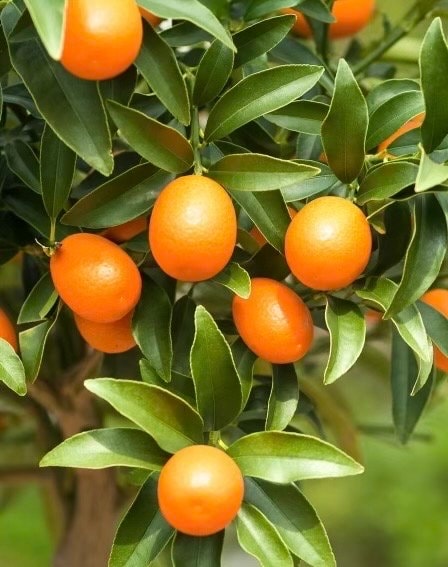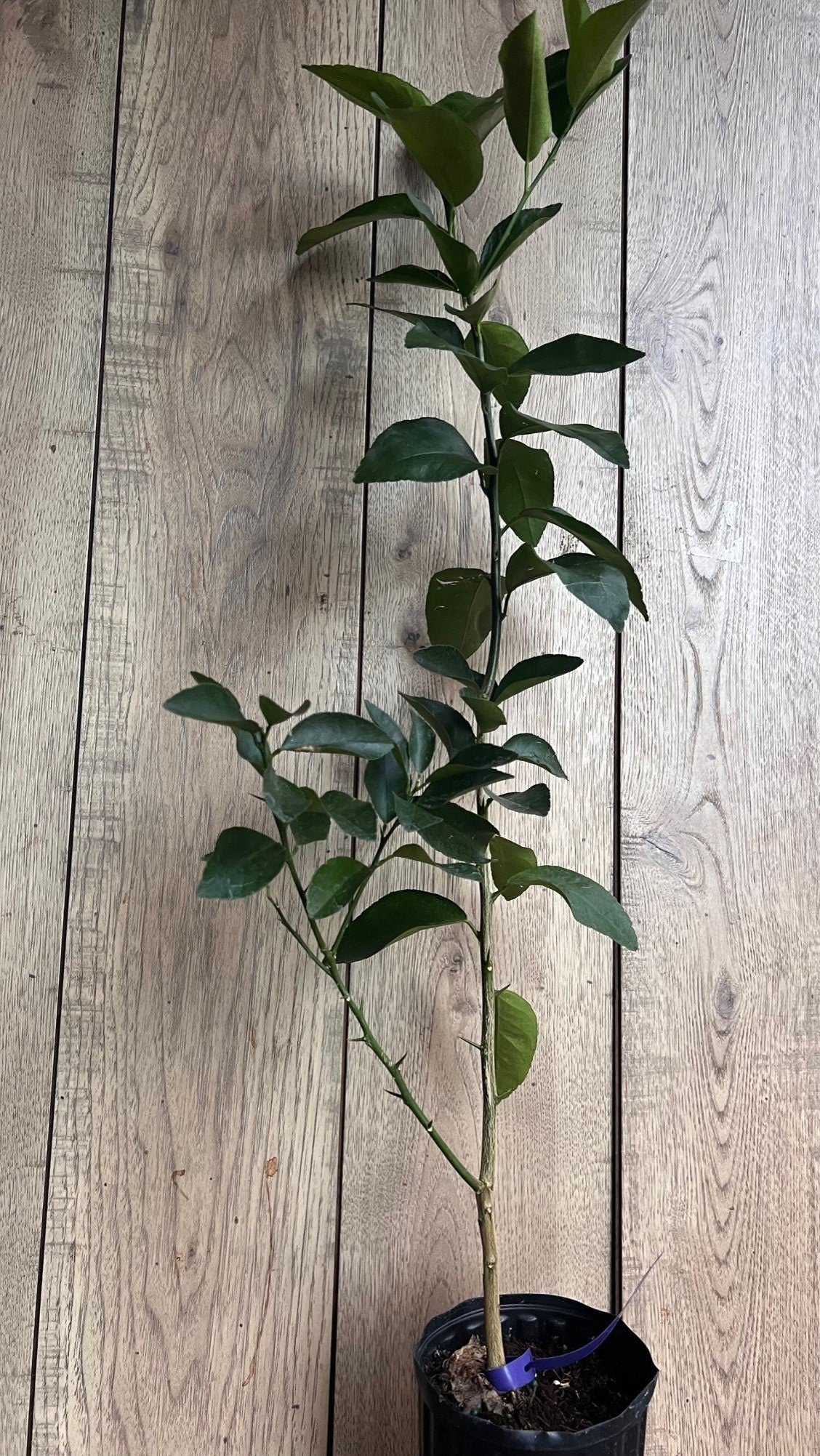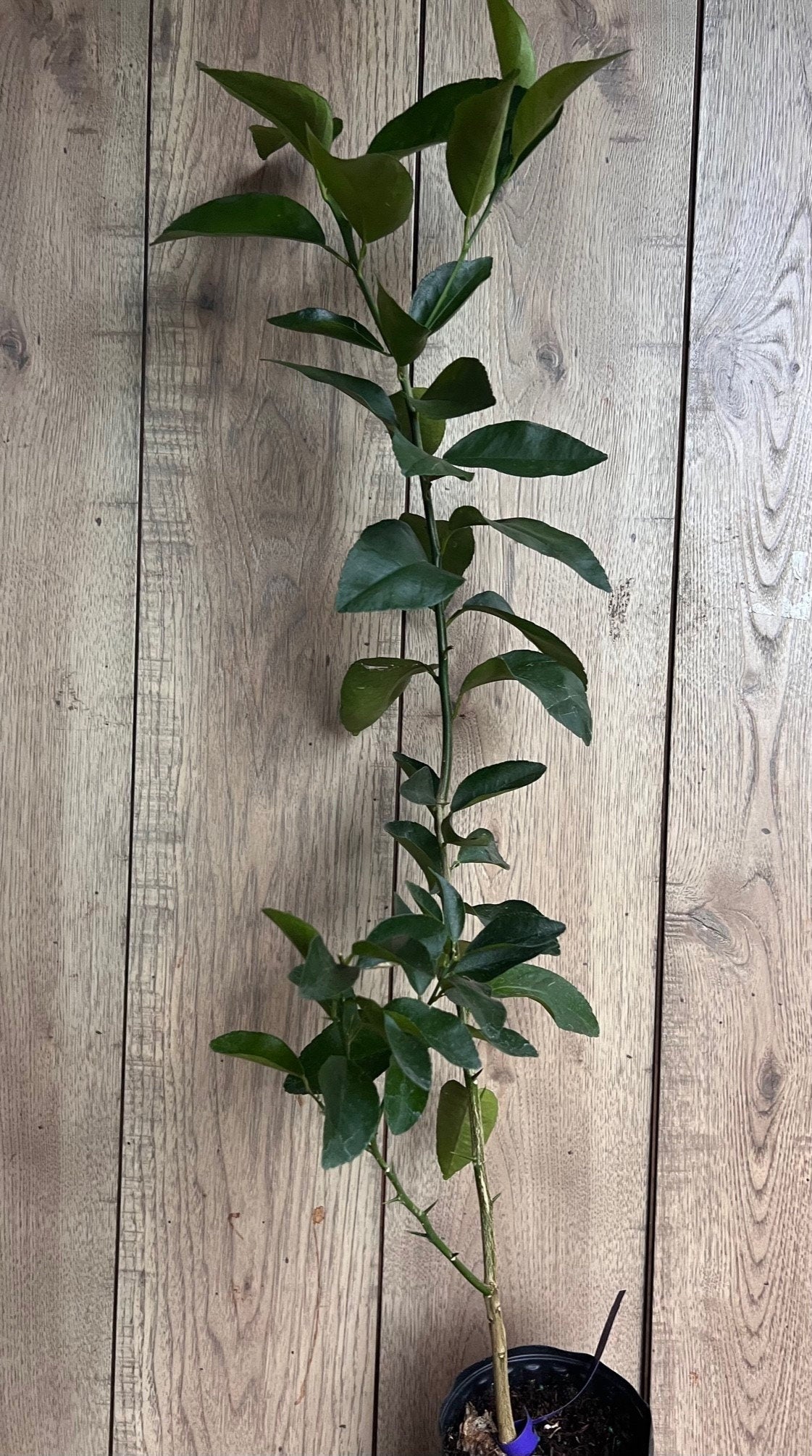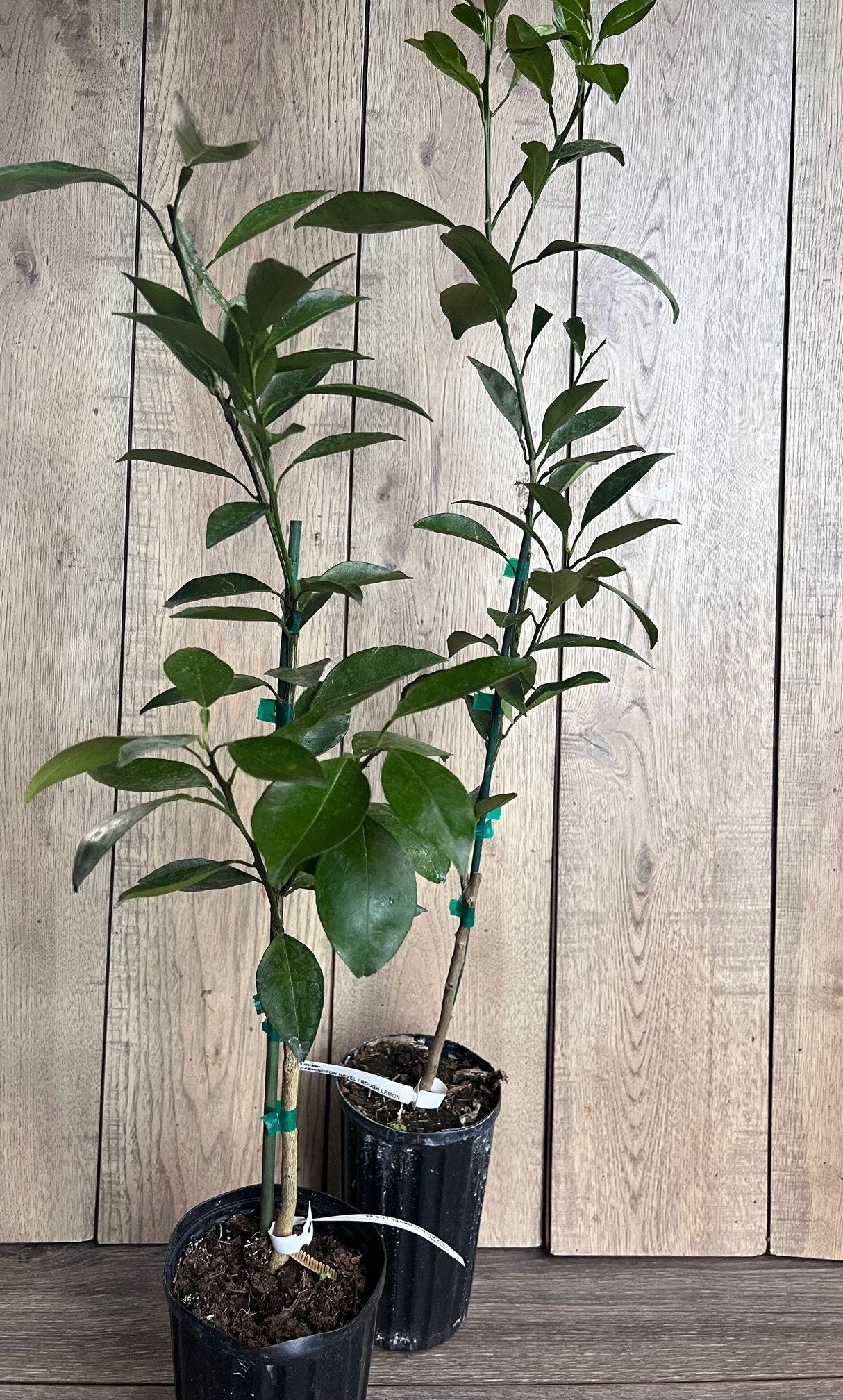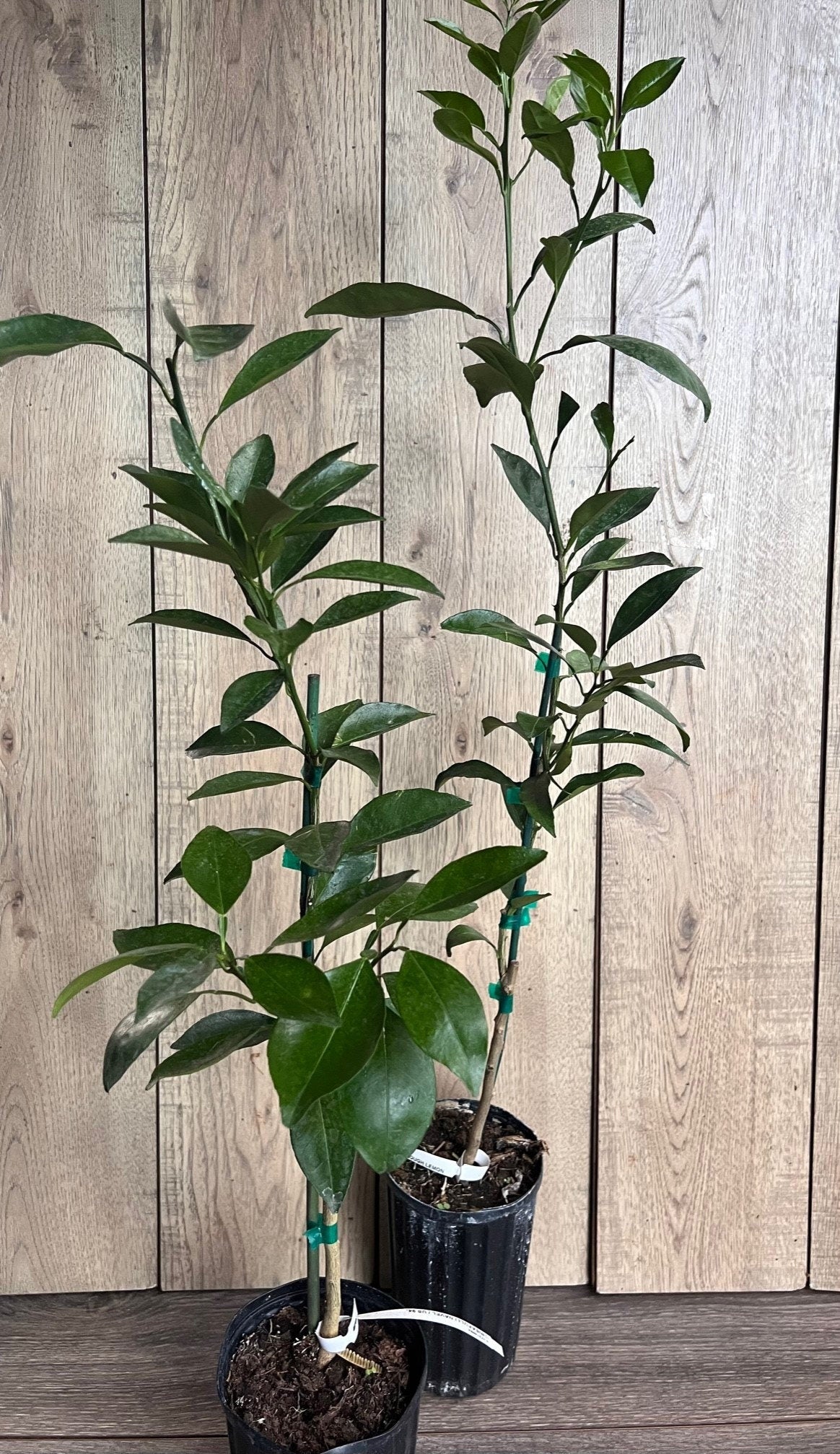1
/
of
5
Meiwa Kumquat tree in Half Gallon pot, grafted, Florida Shipping Only
Meiwa Kumquat tree in Half Gallon pot, grafted, Florida Shipping Only
Regular price
$51.63 USD
Regular price
$68.84 USD
Sale price
$51.63 USD
Unit price
/
per
Shipping calculated at checkout.
Couldn't load pickup availability
Note: You will receive Meiwa Kumquat in 1/2 Gal pot similar to the pictures
Meiwa Kumquat (Fortunella crassifolia) is a sweet, tangy citrus variety known for its small, round, bright orange fruit and edible rind. Native to China, Meiwa Kumquat is prized for its sweeter taste compared to other kumquats, making it perfect for fresh eating, marmalade, desserts, and drinks. This compact, evergreen tree is well-suited for subtropical and tropical climates and can also be grown in containers, making it ideal for small gardens, patios, or indoor spaces.
Care Guide for Meiwa Kumquat (Fortunella crassifolia)
1. Light
- Full Sun: Meiwa Kumquat thrives in full sun and requires at least 8 hours of direct sunlight each day to produce healthy fruit. If growing indoors, place it near a bright south-facing window or use grow lights to supplement natural light, especially during winter.
2. Temperature
- Warm Temperatures: Prefers temperatures between 55°F and 85°F (13°C to 29°C). It is not frost-tolerant and should be protected from temperatures below 30°F (-1°C). In colder regions, consider growing it in a container so it can be moved indoors during the winter.
- Avoid Drafts: Keep the plant away from cold drafts or direct air conditioning/heating vents to prevent stress from sudden temperature fluctuations.
3. Soil
- Well-Draining Soil: Meiwa Kumquat prefers slightly acidic to neutral soil with a pH range of 5.5–7.5. A citrus-specific potting mix or a well-aerated soil mix with perlite or sand is ideal to ensure good drainage and prevent root rot. If planting in the ground, ensure the soil is not heavy or clayey.
4. Watering
- Consistent Moisture: Keep the soil evenly moist, but allow the top 1-2 inches of soil to dry out slightly between waterings. Water thoroughly, but avoid waterlogging, as it can lead to root rot.
- Overwatering: Be cautious not to overwater. During the dormant winter months, reduce watering slightly, but always keep the soil slightly moist.
5. Fertilization
- Regular Feeding: Feed with a balanced fertilizer (e.g., 10-10-10 NPK) or a citrus-specific fertilizer every 6-8 weeks during the growing season (spring through summer). In fall and winter, cut back or stop fertilizing as the tree enters dormancy.
- Organic Options: Organic fertilizers such as compost or slow-release formulas can also be used to enrich the soil.
6. Pruning
- Light Pruning: Meiwa Kumquat doesn’t require heavy pruning, but you can trim dead or damaged branches and shape the tree to maintain a compact form. Pruning is best done in early spring before the tree resumes active growth.
- Remove Suckers: Remove any suckers that grow at the base of the tree to ensure that energy is focused on the main plant.
7. Pollination
- Self-Pollinating: Meiwa Kumquat trees are typically self-pollinating, so you do not need another tree for fruit production. However, planting more trees nearby can help improve yields, especially in areas with low pollinator activity.
- Indoors: If growing indoors, you may need to hand-pollinate using a small brush to transfer pollen between flowers, particularly if there are no natural pollinators like bees present.
8. Pests and Diseases
- Pests: Meiwa Kumquat is relatively pest-resistant, but common pests include aphids, mealybugs, spider mites, and scale insects. Regularly inspect the tree and treat any infestations with insecticidal soap or neem oil.
- Diseases: The tree is generally resistant to diseases, but root rot can occur if the soil is too wet or poorly draining. Be mindful of citrus canker and fungal infections, especially in humid conditions. Ensure proper watering, good airflow, and sanitary practices to minimize the risk of diseases.
9. Harvesting
- Fruit Maturity: Meiwa Kumquats typically ripen in late winter to early spring, depending on your climate. The fruit is ready to harvest when it turns a bright orange and is sweet-tasting. Unlike many other citrus fruits, the rind of the kumquat is also edible and sweet, making the entire fruit enjoyable.
- Gentle Harvesting: To harvest, twist the fruit gently from the tree or use snipping shears to avoid damaging the branches.
10. Container Care (If Growing in Pots)
- Container Size: Choose a pot that is at least 12-18 inches in diameter with drainage holes. Ensure the container is large enough to accommodate the tree's root system.
- Repotting: Over time, you may need to repot the tree into a slightly larger container as it grows.
- Move Indoors in Winter: In colder climates, move the tree indoors before frost arrives and place it in a sunny location, ideally in a room where the temperature ranges between 50°F and 70°F (10°C–21°C).
Share
